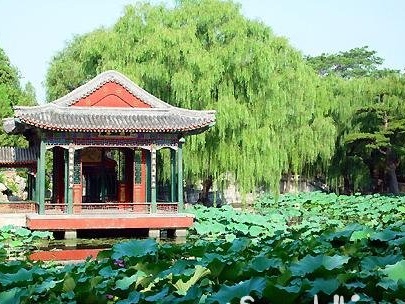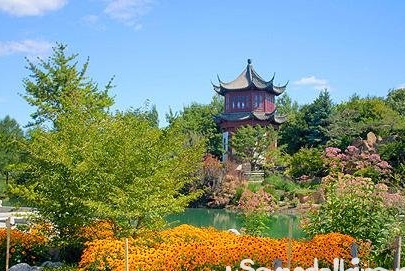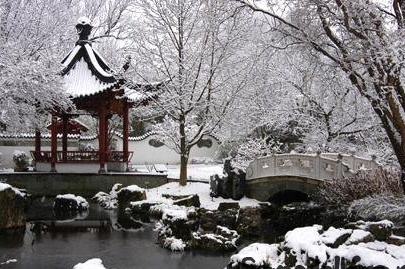
According to the definition of landscape designers of antiquity - the creators of the very first Chinese gardens, they resemble a picture in which trees, flowers, water and stones are organically combined. If the Japanese garden, in the first place, is a place for philosophizing and reflection, then the Chinese garden, in addition, is also created for a variety of entertainments. And, unlike the Japanese garden, which is contemplated from a distance, a person who has come to the Chinese garden is completely immersed in the space of the landscape, feels it in his environment and receives a lot of pleasure from the landscape and his stay “from the inside”.
Any Chinese garden is rich in color - roof tiles, bridges, arbors are painted in bright colors of red, orange or yellow, which in China is considered "imperial", unlike European purple. Another very common shade is azure. The paths are paved with colored pebbles depicting animals: peacocks, dragons, fish, octopuses. The landscape of the Chinese garden has a lot of water, quiet and calm - the smooth, flat lake surface replaces the game of the fountains of the Mediterranean waterfalls here. The most important species points are located on the water, implying a trip by boat, from one bay to another, from island to island. The islands and bays have an important symbolic meaning, for example, the island of the turtle evokes associations with the ancient legend of the creation of the world. The plants most characteristic of the Chinese garden are chrysanthemums, asters, willows, wisteria, apple trees and cypress trees. In the north of the country, birch and cedar are also widespread.

The architects of China were keen on creating "mood" landscapes. A “laughing” landscape is built on a skillful play of contrasting tones: from a gloomy dark cave you directly get to the sunny shore of a cheerful lake landscape. The strict vertical cypress is here next to the delicate willows, the architect always uses the play of light and shadow. Plants in the landscape of "charm" are selected in such a way as to evoke a romantic mood, casting a slight sadness.

In addition, Chinese architects are very fond of man-made stone labyrinths.They rise several floors and are completely unlike the planar green labyrinths of the French.
